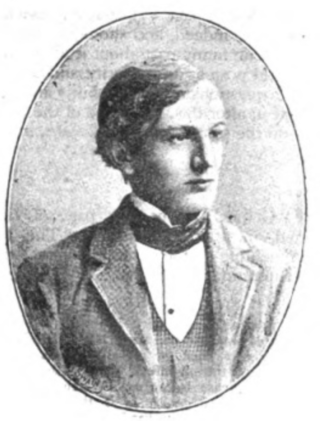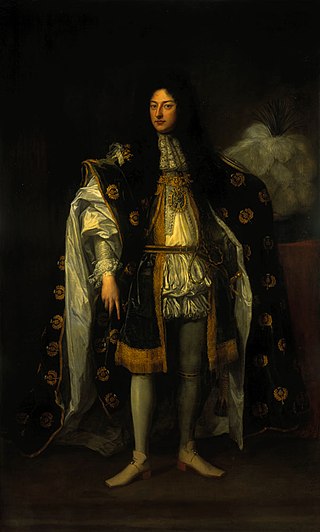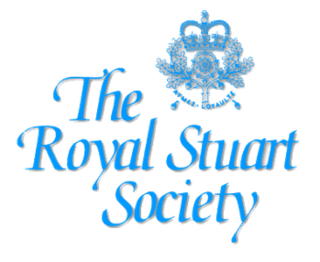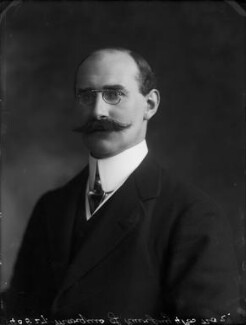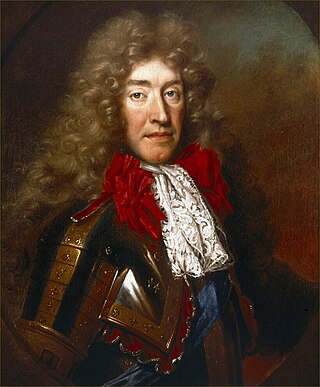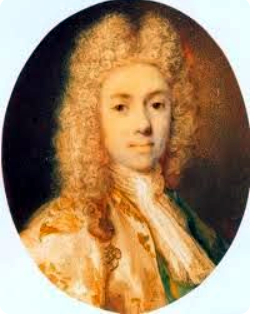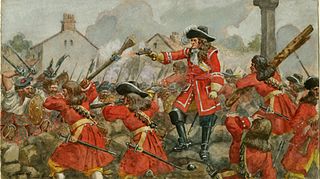The Neo-Jacobite Revival: 1886 to 1920
The emergence of the Neo-Jacobites
In 1886, Bertram Ashburnham circulated a leaflet seeking Jacobite sympathisers, and amongst those who replied was Melville Henry Massue. Together they founded the Order of the White Rose, a Jacobite group that was the spiritual successor to the Cycle Club. [7] The Order was officially founded on 10 June 1886. [9]
The Order attracted Irish and Scottish Nationalists to its ranks. While these various interests gathered under the banner of restoring the House of Stuart, they also had a common streak against the scientific and secular democratic norms of the time. Some even planned (but did not execute) a military overthrow of the Hanoverian monarchy, with the aim of putting Princess Maria Theresa on the British throne. [10] See Jacobite succession .
In parallel the Anglo-Catholic Oxford Movement had revived sympathy for Charles I and revered him as a martyr. This certainly played into the Jacobite narrative, and this thread of near-Jacobite thought was kept alive by men such as Hurrell Froude and James Yeowell who was known as 'the last Jacobite in England". [11]
The Stuarts Exhibition
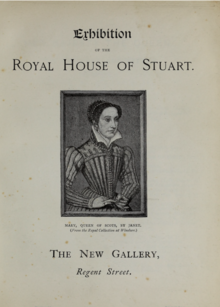
In 1889, the New Gallery in London put on a major exhibition of works related to the House of Stuart. Queen Victoria lent a number of items to the exhibition, as did the wife of her son Prince Leopold, Duke of Albany; Jacobite families from England and Scotland donated items. [7] The exhibition was hugely popular and provoked a widespread new interest in the Stuart monarchs. [12] [13] The exhibition itself showed some distinctive Jacobite tendencies, as Guthrie points out in his book:
It is clear that the point of the whole exhibition in the New Gallery ... was a Stuart restoration and to bring the Jacobite fact and the modern succession to the Stuart claim to the attention of the British public. [7]
However, the fact of Queen Victoria having actively contributed to the exhibition clearly indicates that she did not regard the Neo-Jacobites as significantly threatening her throne.
The Legitimist Jacobite League and other organizations
The new popularity sparked a renewed fervour for the Jacobite cause. In opposition to this, and coupled with the approaching tricentenary of Oliver Cromwell's birth in 1899, Cromwell also became a popular figure. [14] Immediately following the exhibition, new Jacobite groups began to form. In 1890, Herbert Vivian and Ruaraidh Erskine co-founded a weekly newspaper, The Whirlwind , that espoused a Jacobite political view. [15]
The Order of the White Rose split in 1891, when Vivian, Erskine and Melville Henry Massue formed the Legitimist Jacobite League of Great Britain and Ireland. Vivian and Massue were leading members of the neo-Jacobite revival, while Erskine soon focused his political endeavours on the related cause of Scottish Nationalism. The League was a "publicist for Jacobitism on a scale unwitnessed since the eighteenth century". [11]
The Neo-Jacobites in the political arena
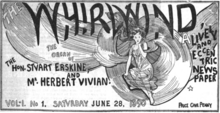
The continuing Order of the White Rose focused on a romantic ideal of a Jacobite past, expressed through the arts. Art dealer Charles Augustus Howell and journalist Sebastian Evans were members of the Order, [11] while poets W. B. Yeats [16] and Andrew Lang [11] were drawn to the cause.
The Legitimist Jacobite League was a decidedly more militant, political organisation. [16] They organised a series of protests and events, often centred on statues of Jacobite heroes. In January 1893, the League attempted to lay a wreath at the statue of Charles I at Charing Cross, but were thwarted by a "considerable detachment of police" sent on the personal order of Gladstone. [17]
They also found supporters within Parliament. In 1891, Irish Nationalist Sir John Pope Hennessy, MP for North Kilkenny, attempted to extend Gladstone's Bill to remove limitations on Catholics to cover the Royal Family. This was an outcome devoutly wished for by the Neo-Jacobites as a step towards the restoration of the Stuarts. [11]
Jacobites started to stand as candidates for parliament. In 1891, artist Gilbert Baird Fraser stood, [11] as did Vivian, as a candidate in East Bradford for the "Individualist Party" on a thoroughly Jacobite platform, [18] and Walter Clifford Mellor (the son of John James Mellor MP), as a Jacobite in the North Huntingdonshire constituency. All three candidates lost. [11] In 1895, Vivian stood in North Huntingdonshire as a Jacobite and lost again. In 1906, he was the Liberal candidate for Deptford and lost badly despite the support of his friend Winston Churchill. [19] Finally, in 1907 he explored a candidacy in Stirling Burghs as a Legitimist; this time he withdrew before the election. [20]
In Scotland, a number of Scottish Nationalists were drawn to the cause. Theodore Napier, the Scottish secretary of the Jacobite League, [21] wrote a polemic titled "The Royal House of Stuart: A Plea for its Restoration. An Appeal to Loyal Scotsmen" in 1898, which was published by the Legitimist Jacobite League. It was one amongst a large number of publications put out by the League. [11]
The end of the revival
The revival largely came to an end with the advent of the First World War: by this time the heiress to the Jacobite claim was the elderly Queen of Bavaria and her son and heir-apparent, Crown Prince Rupprecht, was commanding German troops against the British on the Western Front. The various Neo-Jacobite societies are now represented by the Royal Stuart Society.



